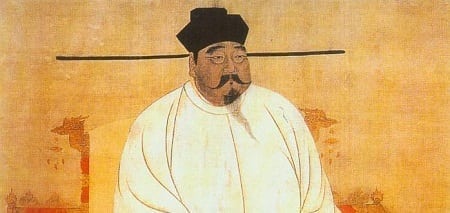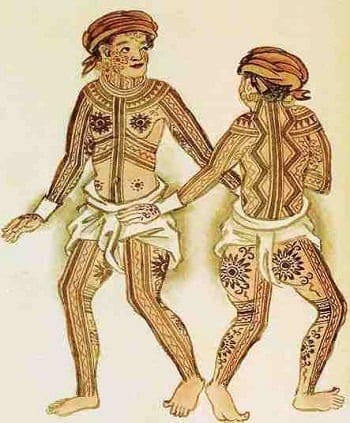The Pre-Colonial ‘Filipino’ Pirates Who Terrorized China in 1174 AD

While it is well-known that our ancestors often traded with the Chinese who came to our shores hundreds of years ago, lesser-known is the fact that it was actually the pre-colonial Filipinos who reached China’s shores first—not the other way around.
For those who might find the whole notion skeptical, archaeologists in 2012 unearthed one of the largest balangays of its kind in Butuan City—giving credence to the theory that the city was a major trading center whose sea-faring residents sailed all across the West Philippine Sea and beyond.
And sailed they did. According to the accounts in the Sung Shih (Sung History), the Sung Dynasty Imperial Court received an envoy from P’u-tuan (Butuan), a kingdom—which the Chinese described as a “Hindu country with a Buddhist monarchy”—ruled by a certain Ch’i-ling (Rajah Kiling) in 1001 AD.
Also Read: The Butuan Ivory Seal (And Other Philippine Artifacts)
Two years later, Kiling sent another two ambassadors named Liyihan and Jiaminan—this time to negotiate with the Sung that Butuan be allowed to trade directly with them instead of having to transfer their wares first to Champa (Cambodia).
While the Sung initially rejected the proposal, they would finally accept it in 1011 AD after being convinced by another envoy—Likan-hsieh—who went there under the orders of new Butuan Rajah Sri Bata Shaja.
To win the Sung over, Likan-hsieh presented their emperor with an array of exotic gifts including a “memorial engraved on a gold tablet, camphor, Moluccan cloves, and a slave from the South Sea.”
Impressed by the tribute—especially the cloves which they thought originated from Arabia only—the Sung agreed to elevate the status of Butuan on par with Cambodia.
Also Read: Thousands in China are descendants of an ancient Filipino king. Here’s how it happened.
Pirates of the Visayas
However, the relationship between the Chinese and the pre-colonial Filipinos was not always rosy.
Decades after establishing direct trading relations with Butuan, the Chinese had to contend with another ethnolinguistic group from the archipelago—this time on hostile terms.
According to accounts, hundreds of raiders from the tribe of “Pi-she-ya” struck off the coast of China’s eastern province of Fujian in 1172 AD (or 1174 AD in some references), pillaging several villages. The raids would go on regularly for several years too, with Chinese historians describing the perpetrators as dark-skinned barbarians with an unintelligible language and who especially coveted the iron they pillaged.
The following is a 12th-century account of these early Visayan pirates who reportedly attacked what is now part of southern Taiwan:
“Nearby is the country of P’i-she-yeh (Visayas). Their language is unintelligible, and they go naked and lead so primitive a life that is almost subhuman. Once during the Ch’un-lui era (1174-89), a chief of the country, at the head of several hundred of his men, suddenly came to Shui-ao, Wei-t-ou and other villages of Ch’uan-chou and wantonly committed slaughter and pillage……
Also Read: 12 Surprising Facts You Didn’t Know About Ancient Philippines
“They showed a passion for iron vessels, spoons, and chopsticks. People would escape from their hands by shutting the door; then they would tear [these] off and take away the door knobs. When a spoon or a pair of chopsticks was thrown to them, they would stop to pick it up. When they saw an iron-clad cavalryman, they would rush forward to peel off his armor, showing no remorse even if their heads were lopped off left and right. In combat they employed javelins, to which was tied a rope more than a hundred feet long, for they valued the iron spearhead so highly that they could not let it be lost. They do not sail in a boat, but make a raft by tying bamboo canes together. When in danger they carry the raft on their shoulders down to the water and row away on it.”
While there have been debates about the ethnicity of the “Pi-she-ya” (some have also argued they were actually Formosans or Taiwanese), the accounts have overwhelmingly pointed to the group being none other than the Visayans. A French Sinologist named Terrien de Lacouperie was the first one to directly link “Pi-she-ya” with the Visaya in his eight-volume work in 1887 called “The Languages of China before the Chinese.”
Also, according to historian Efren Isorena, the Visayans—intrepid, heavily-tattooed seafarers who were known to make raids outside of their territory—fitted the Chinese description perfectly.
Related Article: 10 Reasons Why Life Was Better In Pre-Colonial Philippines
As to the purpose of their raids, the Visayans—besides the usual slaves and loot—could have went after a very valuable resource which the Chinese had plenty of at the time—iron.
With today’s dispute in the West Philippine Sea, the irony is apparent.
References
Bersales, J. (2013). Raiding China. Inquirer.net. Retrieved 22 July 2015, from http://goo.gl/RlMaJ9
Dimacali, T. (2013). Massive balangay ‘mother boat’ unearthed in Butuan. GMA News Online. Retrieved 22 July 2015, from http://goo.gl/GVXhpX
Isorena, E. (2004). The Visayan Raiders of the China Coast, 1174-1190 AD. Philippine Quarterly Of Culture And Society, 32(2), 73-95.
Ocampo, A. (2012). Pirates of the Visayas in China. Inquirer.net. Retrieved 12 July 2016, from http://goo.gl/hwTzhX
Ocampo, A. (2012). Visayan pirates in China, Part 2. Inquirer.net. Retrieved 12 July 2016, from http://goo.gl/A0zLmt
The Borough of Licab by George F. Esguerra
FilipiKnow
FilipiKnow strives to ensure each article published on this website is as accurate and reliable as possible. We invite you, our reader, to take part in our mission to provide free, high-quality information for every Juan. If you think this article needs improvement, or if you have suggestions on how we can better achieve our goals, let us know by sending a message to admin at filipiknow dot net
Copyright Notice
All materials contained on this site are protected by the Republic of the Philippines copyright law and may not be reproduced, distributed, transmitted, displayed, published, or broadcast without the prior written permission of filipiknow.net or in the case of third party materials, the owner of that content. You may not alter or remove any trademark, copyright, or other notice from copies of the content. Be warned that we have already reported and helped terminate several websites and YouTube channels for blatantly stealing our content. If you wish to use filipiknow.net content for commercial purposes, such as for content syndication, etc., please contact us at legal(at)filipiknow(dot)net

